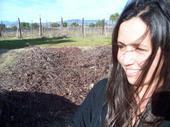Book Reviews
Take us to the river
Reviewed by Jeneka Sanford
More stories by this author...
This article was published on 02.14.02.
Sacramento is not what many people would call a beautiful city. But there are plenty of magnificent places here if one only knows where to look. An American River Almanac, written by local author Peter Hayes, provides a glimpse into the little-known world of scenic river lands all around us.
Hayes, former editor of the Sacramento Union, describes himself as a “late bloomer” who first realized his love of nature in 1960 when a neighbor at the time invited him to go fishing. He didn’t have much of a knack for casting hook and line, but soon realized that he enjoyed the expeditions to the river anyway. That’s because he started noticing the stunning birds and wildflowers that could be found there. In 1975, Hayes began writing nature columns in the Sunday editorials for the Union. Excerpts from the 300 columns he wrote over the next eight years were used in this book.
An American River Almanac begins, appropriately enough, in winter and proceeds to travel through each season along the river. Broken down into weekly entries, just as Hayes’ columns were, the text explores the natural life surrounding the American River as much as the actual river itself. In particular, the birds are a personal passion for Hayes.
Hayes’ writing lingers on the qualities of ladybugs, the evolution of tadpoles, the metamorphosis of butterflies, and the eating habits of baby birds. He marvels at the intricacies of a dragonfly’s gauze-like wings, the mysterious flight patterns of birds, and the vast array of local wildflowers. “Wildflowers light up the landscape,” Hayes writes. Vernal pools in spring offer a glimpse of poppies, lupines and buttercups, to name a few, something Hayes refers to as “an ever-changing oasis of color.”
Thanks to two local shooters extraordinaire—Tom Myers and George Turner—the book’s photography is splendid, capturing fleeting moments in nature; cloud formations, a hummingbird in mid-flight, flowers that appear to bloom moments before the shutter snaps.
An American River Almanac also provides new insight for birdwatchers. In addition to the common everyday birds, Hayes notes juncos, grebes, red-tailed hawks, great-horned owls, yellow-rumped warblers, green herons, killdeer, northern flickers, mockingbirds and white-tailed kites in his observations.
Hayes also recounts a bit of the river’s history. For example: The Southern Maidu or Nisenan were the first known people to inhabit the American River region. But it wasn’t until 1808 that Lieutenant Gabriel Moraga (apparently the first white man to see the river) named it “Las Llagas,” or “the wounds,” because watching the waters churn through the rocky gorge reminded him of the sufferings of Jesus during the crucifixion.
Forty years later, gold was discovered on the shores of the American. Today that gold is mostly gone, writes Hayes, “but the snow-fed waters of the river continue to bestow riches on Californians. There is water to nourish the fields, electricity to light the homes, and brawling rapids, placid sweeps and fishing holes to refresh minds and bodies. Always there is its song: Keep it clear, keep it clean, keep it flowing.”
Hayes reminds us that the river is many things to many people and his An American River Almanac is true testament to the fact that dazzling beauty in nature still exists in our own backyard.
The #1 Trick to Enjoying Family Travel
19 hours ago

No comments:
Post a Comment